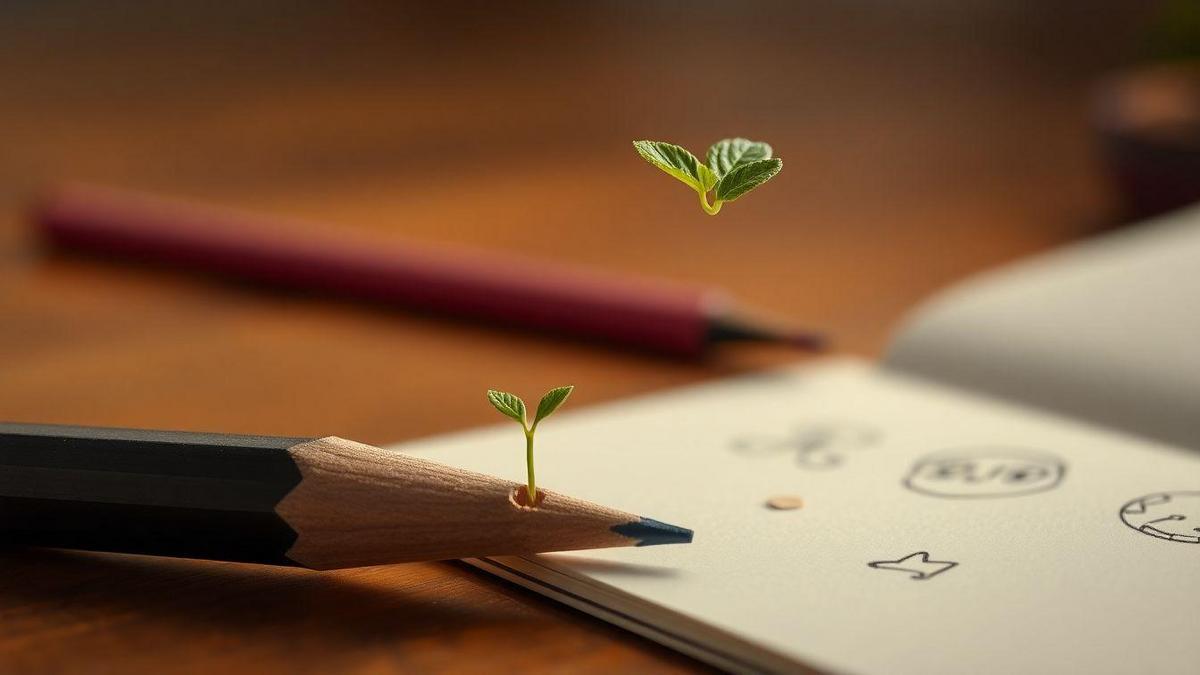How to turn mistakes into learning opportunities
“How to turn mistakes into learning opportunities” is the practice I use every day. I treat errors as data, not destiny: a short pause, a quick note, one small experiment. This article shows the routine, questions, and simple tools I use to shift to a growth mindset and make each mistake a step forward.
Key takeaway
- Look at what happened without blame.
- Say what you did, not who you are.
- Ask, “What can I learn?”
- Make a tiny plan to try again.
- Tell someone or log the lesson.

How I shift to a growth mindset after mistakes
When I mess up I pause and breathe. That turns a full stop into a pause button and keeps curiosity alive.
For a research-informed overview, see how experts define a growth mindset: how experts define a growth mindset.
- Pause 10–30 seconds to calm the initial reaction.
- Name the feeling: frustration, embarrassment, surprise.
- Replace blame with curiosity: What happened? not Who’s at fault?
- Ask: What can I learn right now?
Mistakes are data, not destiny. That mindset moves me from shame to action fast.
For practical classroom- and evidence-based ideas on metacognition and self-regulation, see evidence-based metacognition and self-regulation guidance.
What a growth mindset looks like in my day
I make the shift routine so it’s not dramatic:
- Morning: jot one problem I expect and one tiny way to handle it.
- Midday: if something goes wrong, take a 3-minute timeout to label the mistake and pick the next step.
- Evening: write one sentence about what I learned.
Example: Forgot a meeting link → wrote: Forgot link — copy it into calendar. Small action, no drama.
Simple steps to learn from failure
A short, repeatable loop:
- Pause — breathe to stop the blame loop.
- Name it — describe the error in a single sentence.
- Ask one question — What small change would help next time?
- Pick one tiny step — something doable in 5–15 minutes.
- Try it — immediately or schedule it.
- Record one line — log the result in a note.
Each step is short enough to finish before your coffee goes cold.
One small thought I change after an error
Swap I’m terrible at this for I can learn this.
- Before: I’m terrible at public speaking.
- After: I can learn this. I’ll practice one short intro.
Say it out loud, then act.

How I create a simple practice routine
I build clear, tiny routines so practice feels doable. Treat every error as a clue and write one short goal before you start. For a walk-through on building daily steps, I follow a simple practice routine that keeps goals tiny and consistent.
- Pick one skill to work on.
- Set a tiny daily goal.
- Keep a short log of what went well and what didn’t.
- Review one mistake at the end of each session.
Scheduling short, daily practice sessions
Short, regular sessions beat long, irregular ones. If you’re deciding how long to practice, resources on the power of just twenty minutes daily and how much time per day can help you pick a steady window.
- Choose a fixed time and block 15–25 minutes.
- Set a timer.
- Do a quick note after practice: one win, one mistake.
- If you miss a day, do five minutes the next day to keep the streak.
How repetition helps me turn mistakes into learning opportunities
Repetition makes errors less scary and reveals patterns.
- Repeat the same short exercise until it feels easier.
- Vary one thing at a time (speed, focus, phrasing).
- Mark the exact point of the mistake in notes.
- Ask: What did I do right just before that error?
Treating errors as signals helps you find the smallest fix and try it again. Over time the same mistake disappears.
My five-minute warm-up before practice
A quick warm-up clears my head:
- Two deep breaths and a short smile (30s).
- One easy version of the skill (60s).
- Slow repetition focusing on form (90s).
- One short run at normal speed (60s).
- Quick note: one thing to focus on (40s).

How I analyze mistakes with quick techniques
Treat mistakes like small road signs: pause, breathe, ask simple questions, and log what you see. That keeps you calm and curious.
The three questions I ask after every mistake
- What happened? — Describe the mistake in one clear sentence. Example: I missed the note on bar three.
- Why did it happen? — List likely causes and pick the most likely one.
- What will I do next? — Write one small action (slow it down, isolate the measure, count out loud).
How I log patterns so I can learn from failure
Keep a tiny practice notebook or phone note. One line per session adds up into useful patterns.
- Record date, piece, and one short note about the repeat error.
- Use tags like timing, technique, memory, tone.
- Weekly scan for repeats and plan targeted drills.
This simple logging is a practical way to practice How to turn mistakes into learning opportunities.
Quick chart to spot repeating errors
| Error Type | Likely Cause | Quick Fix |
|---|---|---|
| Timing slip | Rushing or weak count | Practice with metronome, clap the beat — see tips on using a metronome without losing patience |
| Wrong pitch | Weak finger placement | Slow practice, isolate the note; basic scale work such as scales explained in plain English helps |
| Memory break | Overconfidence or fatigue | Chunk sections, review before sleep |
| Tone inconsistency | Poor posture or touch | Record, adjust posture, repeat phrases |
Glance at this chart during warm-ups to pick the right drill fast.

How I use reflective practice for improvement
After each short session I spend 3–5 minutes reflecting: what worked, what didn’t, one next step. That steady reflection turns mistakes into progress.
For a compact guide to short reflective exercises, see reflective practice guidance for learners.
Why reflective practice works
- Fast, clear feedback.
- Stops repeating the same mistake.
- Keeps motivation high with visible small wins.
- Makes errors a map, not a fault line.
Simple reflection prompts (one or two lines each)
- What went well today?
- What was confusing or hard?
- What mistake taught me something and how can I use it?
- What one small step will I try next time?
- How did I feel during practice?
Answer in plain language and tie the lesson to How to turn mistakes into learning opportunities.
The one-line summary I write after practice
Template: I practiced X, learned Y, next I will do Z.
Example: Practiced scales, found rhythm drift — next: slow tempo and count aloud.
This single sentence guides the next session.
How I use feedback to improve performance
Feedback is a mirror and a map. Ask for specific, actionable suggestions and test one change at a time.
Practical steps to support mental wellbeing can help you pause and recover so feedback stays useful: practical steps to support mental wellbeing.
- Look for specific moments to fix, not vague comments.
- Test one change at a time so you know what worked.
- Celebrate small wins to keep motivation high.
How I ask for clear feedback
Make requests short and concrete:
- State the goal in one sentence.
- Provide a short example or timestamp.
- Ask for 2–3 concrete suggestions.
- Ask what to stop doing if it harms progress.
My exact question to get helpful feedback:
“Can you tell me one thing I did well, one thing to change next time, and one short tweak I can practice for 10 minutes that will make the biggest difference?”
How I separate useful notes from noise
Sort feedback quickly:
- Label comments as action, idea, or ignore.
- Turn actions into short practice steps. If it won’t change your next attempt, it’s probably noise.
- Pick the top 2 actions to try next session and review results.
This keeps you focused and prevents drowning in opinions.

How I build resilience and recover from errors
Treat errors as detours, not dead ends. Ask: How to turn mistakes into learning opportunities — then answer with action, not guilt. If the stumble comes from hesitation to begin, strategies for overcoming the fear of starting can help you restart faster.
- Name the mistake to stop panic.
- Pick one fix. Small focus beats scattered fixes.
- Write one sentence about the lesson.
Small steps to bounce back quickly
- Pause for 60 seconds and breathe.
- Choose one tiny win you can grab in 10–20 minutes.
- Do that win, celebrate briefly, and log it.
- Keep a quick wins list on your phone to counter the urge to quit.
Short reset ritual after a setback:
- Breathe for one minute.
- Write one sentence: What went wrong? and one: One fix I can try.
- Do a 10-minute focused task related to the fix.
- Mark it done and log the lesson.
- Say: I tried. I learned. I’ll try again.
How I keep motivation and enjoy the learning process
Small, clear habits make practice feel fun, not like a chore. When progress feels slow I turn to practical tips for staying motivated and ways to make practice engaging through making practice fun.
- Consistency over intensity — a little each day.
- Add playful variations to stay fresh.
- Track progress with a simple checklist.
- Rest when tired and practice with company when you can.
How I set tiny goals to stay motivated and learn from failure
Break big tasks into bite-sized steps:
- Pick one small target (one chord, one paragraph).
- Set a short timer (10–20 minutes).
- Focus only on that step. Mark it done and note one thing that went wrong.
- Adjust the next tiny goal based on that note.
When I fail, I ask: What did I try that almost worked? and treat errors as clues. Short sessions like those described in twenty-minute routines make tiny goals realistic.
For turning a lesson into a specific, timebound goal, try the SMART goals worksheet for setting goals.
How I celebrate small wins to turn mistakes into learning opportunities
Make wins visible and mistakes useful:
- Name the win out loud.
- Log one lesson from the mistake.
- Share the win with a friend or in notes.
- Repeat the broken part slower and clean it up.
- Gamify with points and small rewards.
Mini-rewards I use after a breakthrough:
- A 10-minute walk with music.
- A favorite drink.
- One short episode or a small game.
- A new song to explore later.

Continuous improvement after failure
When I mess up, I pause, ask what small change can I try next?, and run a short test. That tiny loop—notice, hypothesize, try—keeps me curious and moving forward. If you need ways to break a plateau, ideas for breaking creative blocks can be useful for mini-experiments.
A concise tool to structure small experiments is the plan do study act worksheet guide, which maps each quick test to a clear outcome and learning step.
How continuous improvement looks in my notebook
Keep entries short and usable:
- Header: Date and Problem (one sentence).
- Causes: up to three bullets.
- Action plan: one clear tweak.
- Result: one sentence about what changed.
Example:
- Date: 2025-04-12
- Problem: shaky rhythm at measure 32
- Causes: rushed tempo / eye drift / unclear fingering
- Action: slow tempo mark fingers 10 min hands-separate
- Result: steadier at slow tempo, still shaky in fast run
How I run mini-experiments to fix what went wrong
Treat fixes like quick science experiments:
- Decide a single change to test.
- Set a short window (one session or three days).
- Define a clear outcome.
- Try it and record the result.
- Repeat, tweak, or abandon.
Examples: reduce tempo by 10% for five repeats; use metronome on beats 1 and 3 only for three sessions.
Simple tracking method for steady gains
- Daily: one line with score 1–5 and a short note.
- Weekly: scan days, circle high scores, list two wins and one next step.
- Monthly: count 4–5 score days and nudge that number up by one.
Keep tracking under two minutes a day and always record one win.

How I transform failure into growth with error-driven learning
Error-driven learning is a tiny loop: notice the error, form a hypothesis, run a test, record the result. That low-pressure loop turns big failures into a series of small wins.
How it helps break problems down
- Pick one specific mistake.
- Write a simple hypothesis about why it happened.
- Design a tiny 5–15 minute test.
- Try it, watch, and jot what changed.
How I turn each failure into a clear lesson to apply next time
Make failures teachable by turning them into short, usable rules.
- Describe the error in one sentence.
- Write the lesson as one action: e.g., Slow the tempo to 60% and practice the difficult bar 10 times.
- Add a tiny goal for the next session.
I often think about How to turn mistakes into learning opportunities when I write these tips—this phrase reminds me to look for the lesson, not the shame. For quick comparisons between practice and talent, see ideas on talent vs practice.
Short error-to-lesson checklist
- Name the error in one line.
- State the likely cause in one line.
- Write the lesson as one action.
- Set a tiny practice goal for next time.
- Try the action in a short test.
- Record the result and repeat.
Conclusion
Treat mistakes as data, not drama. Pause, name what happened, ask What can I learn?, pick one small step, and try it. That tiny loop—notice, tweak, repeat—turns stumbles into steady progress. Repetition, short experiments, and simple reflective notes are practical ways to practice How to turn mistakes into learning opportunities every day.
If this helps, find more down-to-earth tips at https://clickneutro.com and keep turning mistakes into steps forward.
Frequently asked questions
Q: How to turn mistakes into learning opportunities?
A: Own the mistake quickly, ask what went wrong, write one clear lesson, plan a tiny fix, and try again.
Q: What quick steps do I take after a mistake?
A: Pause and breathe, note the facts in one sentence, ask why it happened, and pick one tiny action to change.
Q: How do I stop feeling stuck by failure?
A: Reframe the event as data, list one thing you did well, set a tiny next step, and act on it.
Q: What if I keep repeating the same mistake?
A: Log each instance, tag the likely cause, design a mini-experiment that targets the cause, and test it for a few sessions. For common early pitfalls, review seven beginner mistakes that slow progress.
Q: How do I ask for feedback that helps me learn?
A: State your goal in one sentence, share a short clip or timestamp, and ask for one thing to keep, one to change, and one small tweak to practice for 10 minutes.
